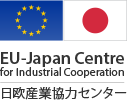

Kanagawa Prefecture

Prefecture flag
Main City: Yokohama
Population: 9,236,000 people, ranking 2/47 (2021)
Area: 2,415.84 km²
Geographical / Landscape description
Kanagawa Prefecture is located in the southern Kanto region of Japan and is part of the Greater Tokyo Area.
Topographically, the prefecture consists of three distinct areas. The mountainous western region features the Tanzawa Mountain Range and Hakone Volcano. The hilly eastern region is characterized by the Tama Hills and Miura Peninsula. The central region, which surrounds the Tama Hills and Miura Peninsula, consists of flat stream terraces and lowlands around major rivers including the Sagami River, Sakai River, Tsurumi River, and Tama River.
Climate
The climate is moderate due to the warm current running along the Pacific side of the archipelago.
Recent history, culture
Kanagawa has played a major role in some significant periods in Japan's history. The first began in 1192, when the first military government was established in Kamakura. This made Kanagawa the centre of the Japanese political scene. The second period commenced in 1859, when the Port of Yokohama was opened to the world after more than 200 years of strict national isolation. Since then, Kanagawa became the gateway for the introduction of Western civilization. The third period was the 1950s, when the Japanese economy was being reconstructed after World War II. During this period, along with the development of the Keihin Industrial Belt, Kanagawa played a significant role in rebuilding the war-devastated Japanese economy.
Kanagawa Prefecture is blessed with a traditional culture along with its long history, Kamakura, as ancient capital, abounds in historic temples and shrines, including the famous Great Buddha.
More chapters:
- Economic overview
- Infrastructure
- Living environment
- Major types of economic activities
- Opportunities for EU Investors / Exporters / Importers
- Setting up a business in the prefecture
- Tourism information









